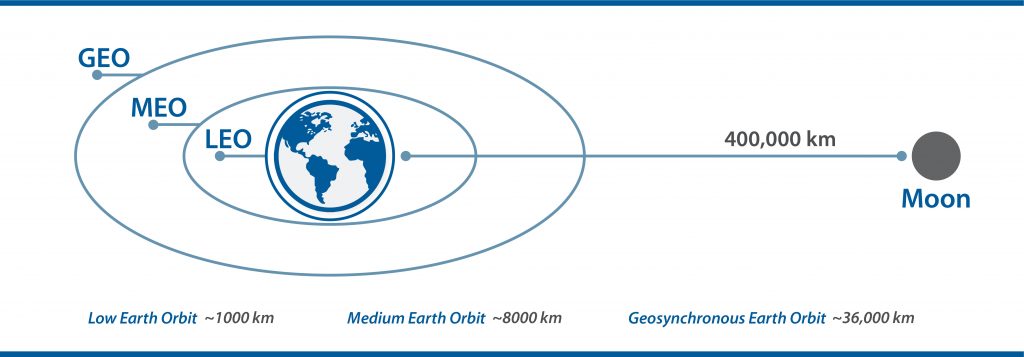SpaceX
When the Russian invasion of Ukraine began in February 2022, one immediate response of the government in Kyiv was to approach commercial space company SpaceX for access to its ‘Starlink’ broadband satellite mega-constellation. SpaceX’s CEO and founder, Elon Musk, quickly responded by making the satellites available for use and sending terminals to Ukraine that would allow the Ukrainian military assured communications and data connectivity in the face of Russian military operations (Vinion, 2022). Ukraine’s access to Starlink has helped provide secure high-speed communications to its military and has been critical in assisting its operational response (Miller, Scott, and Bender, 2022). Russia’s efforts to jam Starlink have so far been unsuccessful (Insinna, 2022), but Moscow has subsequently claimed that commercial space capabilities are a legitimate target for counterspace attacks (Bingen and Johnson, 2022).
The example of Starlink in Ukraine reinforces the importance of developments in commercial space broadly and especially highlights its growing potential for supporting military operations. With the rapid growth of commercial space, and forecasts that the global space economy, of which commercial space will make up a majority of activity, may surpass US$1 trillion by 2040, the potential for militaries to expand their use of commercial space is clear (Morgan Stanley, n.d). New types of space capabilities drive the development of the space industry. Satellite mega-constellations demand low-cost rapid space access to deploy large numbers of satellites cheaply and then sustain constellations with further launches. These needs are being met by reusable launch technologies, including fully reusable rockets such as SpaceX’s Starship Super Heavy, which aims to drop launch costs to between US$2m and US$10m per launch (Manin, 2020).

Able to deliver up to 100 tons to low-earth orbit (LEO), the low cost offered by fully reusable launch capabilities such as Starship sit at the opposite end of the spectrum of launch capabilities in contrast to large expendable boosters, epitomized by NASA’s Space Launch System (SLS) at US$4bn per launch, with a launch rate of once per year at best (Berger, 2022). The cost differential, and the rapid launch cadence offered by full reusability, allow the opportunity to deploy either large payloads or large numbers of small satellites that can support the growth and sustainment of satellite mega-constellations. They also make possible the regular refresh of constellations to ensure on-orbit capabilities can keep pace with the rapid technological innovation and breakthroughs occurring. Lower cost launch is accelerating the growth of mega-satellite constellations in commercial space, the importance of which in future warfare cannot be overstated.
Towards Mega-Constellations
The expanding use of autonomous systems with unmanned air vehicles (UAVs), unmanned surface vehicles (USVs), unmanned underwater vehicles (UUVs), and unmanned ground vehicles (UGVs) reflect an increasingly important component of military operations. The conflict in Ukraine has been seen as the first war in which autonomous systems have played a significant role, ranging from small, commercially available UAVs to military-grade combat UAVs such as the Turkish TB2 Bayraktar and even sophisticated loitering munitions like the U.S.-made Switchblade 300 and 600,(Roblin, 2022). At sea, Ukraine has used explosive-laden ‘drone boats’ to attack naval targets (Rogoway, 2022). Although employment of autonomous systems in the future battlespace will likely maintain the requirement for a human ‘on the loop’ to provide broad direction, the use of Starlink over Ukraine is a look to the future. The growing use of autonomous systems is likely to combine the development of artificial intelligence (AI) in what the Chinese refer to as ‘Intelligentized Warfare’ that will open up new approaches for non-contact warfare, where long-range fires, epitomized by systems such as the M-142 High Mobility Artillery Rocket System (HIMARS), can direct precision fire from vast distances.
The future will feature the introduction of autonomous systems in more significant numbers as ‘swarms’ to overwhelm opponent defense systems. The concept of drone swarms is not new: Martin C. Libicki in 1995 talked of developing battlefield meshes and waging ‘fire ant warfare’ in his work ‘The Mesh and the Net: Speculations on armed conflict in a time of free silicon.’ Libicki spoke of ‘…battlefield meshes, as such, built from millions of sensors, emitters, and sub-nodes dedicated to collecting every interesting signature and assessing its value and location for targeting’ (1995). The growing complexity of warfare and, in particular, the command and control (C2) of large numbers of autonomous systems over large geographic areas will demand high bandwidth enabled by reliable and secure satellite communications (SATCOM). SATCOM will make possible the employment of large numbers of autonomous systems and multi-domain operations (MDO) through mega-constellations on-orbit in LEO and medium-earth orbit (MEO) without the exorbitant cost of large, exquisite satellites in geosynchronous orbit (GEO).
In the same way, satellite mega-constellations can allow pervasive communications across the battlespace, they can also provide comprehensive earth observation across multiple wavelengths to detect, identify and track opponents on land, at sea, or in the air. Whether pervasive surveillance from space or ‘near space’ where high-altitude UAVs operate, assured connectivity via resilient SATCOM will be necessary. The potential for commercial satellite mega-constellations to provide earth observation and SATCOM opens up the opportunity for smaller and emerging military powers to acquire the enabling capabilities for joint and multi-domain operations. Rather than spending billions of dollars on complex air, naval, and land warfare platforms, using distributed architectures in commercial space could enable agile long-range fires and connectivity. As a result, new possibilities for space-enabled capabilities will be opened up for militaries, facilitating a generational evolution to highly networked fire and maneuver with the increasing use of autonomous systems.
The potential for commercial satellite mega-constellations to provide earth observation and SATCOM opens up the opportunity for smaller and emerging military powers to acquire the enabling capabilities for joint and multi-domain operations.
– Dr. Malcolm Davis
An Operational and Warfighting Domain
The space domain is emerging as perhaps the most critical military operations domain in that without assured access to space, the ability to fight with speed, surprise, and precision in all other operational domains, including cyberspace – which will rely heavily on space to provide ‘broadband in the sky’ as an alternative to submarine cable-based internet – becomes increasingly problematic. Given this growing military dependency on space-enabled capabilities, including those made possible by commercial space, the space domain is likely to move quickly from being an operational domain to a warfighting domain prior to, or at the outset of, a major conflict in the future. Space is increasingly contested as several nations pursue counterspace or anti-satellite (ASAT) capabilities with the development of direct-ascent kinetic kill, co-orbital ‘soft kill,’ and ground-based ‘soft kill’ systems (Weeden and Sampson, 2022). Continued reliance on traditional satellite architectures based on small numbers of large, exquisite satellites will make users highly vulnerable to emerging counterspace threats.
A ‘space Pearl Harbor’ could cause a catastrophic failure of space support or deny critical access to space capabilities, for example, quickly eroding the effectiveness of military operations and autonomous systems. The denial of access to space, creating a ‘day without space,’ could thus be a means of achieving battlespace advantage against opponents critically reliant on space-enabled capabilities and emphasizes why assured access to space and resilient space capabilities are so vital. The challenge of assured access can be partly solved by increasing reliance on commercial space and its mega-constellations to reinforce space deterrence by denial and resilience. Space deterrence sits alongside diplomatic and legal efforts to constrain space weaponization and establish norms of responsible behavior (Davis, 2022). While these efforts are essential and hopefully will meet with success, it cannot be assumed that all nations will honor their legal and regulatory obligations or always abide by the norms of responsible behavior. Legal and regulatory measures must, therefore, still be backed by effective and credible deterrence in space to reduce the incentive for hostile activities.
Investing in resilient space capabilities must center around achieving disaggregated and distributed architectures to reduce the likely effectiveness of any counterspace campaign. The use of commercial space launches, including fully reusable launch vehicles with a high payload to orbit, will allow the rapid reconstitution of lost space capability, enhancing deterrence through resilience if deterrence by denial fails. By combining these efforts, nations may be able to employ commercial space in ways that can reduce the risk of space becoming a warfighting domain and preserve their access to space even if counterspace weapons are employed – a strategy that could be decisive to prevailing in future conflicts. The opportunity offered by ‘the small, many and cheap,’ facilitated by rapid, low-cost, regular space launches, transforms the business model of space and its nature as an operational domain for militaries. This ‘democratization’ of space also allows a growing number of actors access to space, to own and operate satellites and to access or develop sovereign space launch capabilities. As a result, in addition to becoming more congested and contested, space is becoming more competitive and complex in terms of the activities relating to its future development.
To the Moon and Cislunar
As new space capabilities emerge owing to the falling cost of space access, new types of commercial activities are opening up between LEO and GEO and beyond to cislunar space. The next era in human space activity will extend beyond the traditional ‘near earth’ space of LEO as commercial space pioneers and cultivates –a new space economy based around in-space manufacturing and resource exploitation that extends from the Karman line to the surface of the Moon. In time, this could lead to increased competition between major powers across this vast region of space. The importance of the earth-moon environment – with the region from GEO to cislunar being analogous to the maritime ‘blue water’ region versus the LEO to GEO ‘brown water’ region – remains under debate. Advocates of a brown-water approach, such as Bleddyn Bowen (2020), de-emphasize the importance of the moon and cislunar space and dismiss outright the notion of ‘high ground’ in space. Proponents of a ‘Blue Water’ perspective, such as Namrata Goswami and Peter Garretson, argue that the expansion of commercial space and a return of humans to the moon and cislunar space in the 2020s and 2030s will introduce a new era of strategic and military competition in space, particularly between the United States and China, from the Karman line to the moon and beyond (Goswami and Garretson, 2020).

As U.S. space activities pivot from LEO to the moon, supported by commercial space capabilities, China’s lunar exploration plans envision an initially autonomous and then a human presence on the lunar surface from the mid-2030s, again with a focus on space resource utilization and the establishment of a cislunar space economy (Goswami, 2022). The significance of the ‘super-GEO’ region into cislunar space for military actors remains unclear as it will take some time for the emergence of new types of space capability to open up activity to such ranges. That scenario may need decades to emerge in the traditional timescales of state-run space programs such as that of NASA or the European Space Agency (ESA). Commercial space, however, embraces innovation better and moves fast. It is also clearly not constrained to the near-earth region. A key goal driving commercial space is to exploit lunar resources for in-space manufacturing and to sustain human activity on and around the lunar surface. As this paper is being written, NASA’s Artemis I is returning from a distant lunar retrograde orbit, with subsequent Artemis missions planned to lead to the return of humans on the lunar surface perhaps as early as 2025. Artemis is relying on commercial space to land astronauts on the lunar surface. Commercial space will play an increasing role in supporting follow-on missions that hope to establish a permanent presence on the moon by the end of the decade.
For now, in-space manufacturing is only being tested on a small scale on the International Space Station (ISS). Transferring in-space manufacturing to the moon will allow a much larger resource base to be exploited and more extensive production facilities to be deployed, laying the basis for developing space-based solar power, lunar bases, and large-scale on-orbit facilities (Donnellon-May, 2022). If successful, it will become possible to build satellites in space rather than launch them from the earth. At the very least, the possibility of utilizing lunar resources as raw materials for manufacturing could see increasing industrial activity emerging on and around the moon. New activities such as cislunar space domain awareness, inspection, and on-orbit refueling and resupplies could emerge as part of the future space economy (Buehler et al., 2021). Becoming able to exploit space resources will herald a new era in human space exploration but also have implications for militaries. There is no ‘space race’ in a traditional sense, but a prolonged and expansive strategic and commercial competition over presence, access to resources, and the means to shape and control emerging regulatory structures regarding space governance are taking shape.
The Space Trajectory
The growth of space capabilities, and the proliferation of space actors, have transformed the conduct of military operations and the use of force. This trend has gathered pace from the 1980s and 1990s, with the 1991 Gulf War aptly described as the ‘first space war’ in which the U.S.-led military coalition relied heavily on space capabilities to conduct operations during Desert Storm and the land campaign of Desert Sabre. Today, the dependency of militaries on space capabilities continues to grow, even as an equally significant transformation is occurring in commercial space. The growing importance of space as an operational domain in its own right is driving new organizational structures, including the emergence of space forces and dedicated space commands (Department of Defense, 2022). While national actors continue to play a role, particularly as ‘space forces’ take shape, it will be commercial space at the forefront of enabling the expanded use of space. The employment of autonomous systems as critical components of future kill chains will depend increasingly on secure high-bandwidth SATCOM to function. The reliance on distributed space architectures to support military operations in traditional domains will only increase. Those solutions are primarily commercial in nature, and it will be commercial space that builds satellites, launches them on commercial reusable launch vehicles, and sustains on-orbit capability.
While national actors continue to play a role, particularly as ‘space forces’ take shape, it will be commercial space at the forefront of enabling the expanded use of space.
– Dr. Malcolm Davis
Commercial space will allow a pivot away from boutique numbers of costly, large, and complex satellites operated by governments towards increasingly sophisticated but lower-cost small satellite technologies at falling costs. The proliferation of small satellites and the growth of mega-constellations comprising thousands of satellites will be crucial in an increasingly contested space domain, given the introduction of more sophisticated counterspace threats that militaries will encounter. The growth of commercial space will play an essential role in enabling and expanding space access, with the region of most significant relevance being what Bleddyn Bowen (2020) refers to as the ‘cosmic coastline’ between LEO and GEO. Further in the future, commercial space will be active in the lunar and cislunar areas of space, potentially with the ability to use space resources for in-space manufacturing. The prospect of what Everett Dolman (2022) calls ‘astrostrategic competition’ emerging in the coming decades will affect the future dynamics of military competition and increasingly shape space activities. It is likely that as human activity increases on and around the moon, probably from the mid-2030s onwards, establishing dominance on the moon and in cislunar space as a means of achieving astrostrategic power will become a feature of great power competition.
References
Berger, E. (2022) ‘Finally, we know production costs for SLS and Orion, and they’re wild,’ Ars Technica, March 2, 2022.
Available at: https://arstechnica.com/science/2022/03/nasa-inspector-general-says-sls-costs-are-unsustainable/
Bingen, K.A. and Johnson, K. (2022) ‘Russia Threatens to Target Commercial Satellites,’ CSIS.
Available at https://www.csis.org/analysis/russia-threatens-target-commercial-satellites
Bowen, B. (2020) War in Space, Edinburgh University Press, Edinburgh.
Buehler, B., Felt, E., Finley, C., Garretson, P., Stearns, J., and Williams, A. (2021) ‘Posturing Space Forces for Operations Beyond GEO,’ Space Force Journal, Issue 1, January 31, 2021.
Available at: https://spaceforcejournal.org/posturing-space-forces-for-operations-beyond-geo/
CSIS (2022)
Available at: https://csis-ilab.github.io/aerospace-viz/LaunchCostSuccessComparison/
Davis, M. (2002) ‘Signing of anti-satellite weapons ban a positive step for Australia in space,’ The Strategist, October 31, 2022.
Available at: https://www.aspistrategist.org.au/signing-of-anti-satellite-weapons-ban-a-positive-step-for-australia-in-space/
Department of Defense, ‘Defence Space Command,’ 2022, Australia.
Available at: https://www.airforce.gov.au/about-us/defence-space-command.
See also Yildrim, U. and Davis, M. (2022) ‘Understanding the military’s role in space,’ The Strategist, May 17, 2022.
Available at: https://www.aspistrategist.org.au/understanding-the-militarys-role-in-space/
Dolman, E. C. (2022) Astropolitik – Classical Geopolitics in the Space Age, Frank Cass, London.
Donnellon-May, G. (2022) ‘The race to develop space-based solar power is heating up,’ The Strategist, November 22, 2022,
Available at: https://www.aspistrategist.org.au/the-race-to-develop-space-based-solar-power-is-heating-up/
Goswami, N. (2022) in ‘China’s Space Industry,’ ASPI Podcast, December 8, 2022,
Goswami, N. and Garretson, P. (2020) Scramble for the Skies – The Great Power Competition to Control the Resources of Outer Space, Lexington, London.
Insinna, V. (2022) ‘SpaceX beating Russian jamming attack was ‘eyewatering’: DoD official,’ Breaking Defense, April 20, 2022.
Available at: https://breakingdefense.com/2022/04/spacex-beating-russian-jamming-attack-was-eyewatering-dod-official/
Libicki, M.C. (1995) The Mesh and the Net – Speculations on Armed Conflict in a Time of Free Silicon, Institute for National Strategic Studies, Washington DC.
Manin, A. (2020) ‘SpaceX now dominates rocket flight, bringing big benefits – and risks – to NASA’, Science, May 20, 2020.
Available at: https://www.science.org/content/article/spacex-now-dominates-rocket-flight-bringing-big-benefits-and-risks-nasa
Miller, C., Scott, M. and Bender, B. (2022) ‘UkraineX: How Elon Musk’s space satellites changed the war on the ground’, Politico, June 8, 2022.
Available at: https://www.politico.eu/article/elon-musk-ukraine-starlink/
Morgan Stanley (n.d) ‘The Space Economy’s Next Giant Leap.’
Available at: https://www.morganstanley.com/Themes/global-space-economy;
Roblin, S. (2022) ‘Drone War Accelerates over Ukraine’, Inside Unmanned Systems, November 14, 2022.
Available at: https://insideunmannedsystems.com/drone-war-accelerates-over-ukraine/
Rogoway, T., (2022) ‘Ukraine’s Unprecedented Mass Drone Boat Attack Was a Wakeup Call,’ The Warzone, November 1, 2022.
Available at: https://www.thedrive.com/the-war-zone/ukraines-unprecedented-mass-drone-boat-attack-was-a-wakeup-call
Vinion, K. (2022) ‘How Elon Musk’s Starlink Became Invaluable to Ukraine’s War Effort,’ Radio Free Europe Radio Liberty, October 20, 2022.
Available at: https://www.rferl.org/a/starlink-elon-musk-ukraine-war-russia-funding/3209 1045.html
Weeden, B. and Sampson, V. (2022) Global Counterspace Capabilities – An Open Source Assessment, Secure World Foundation.
Available at: https://swfound.org/counterspace/








